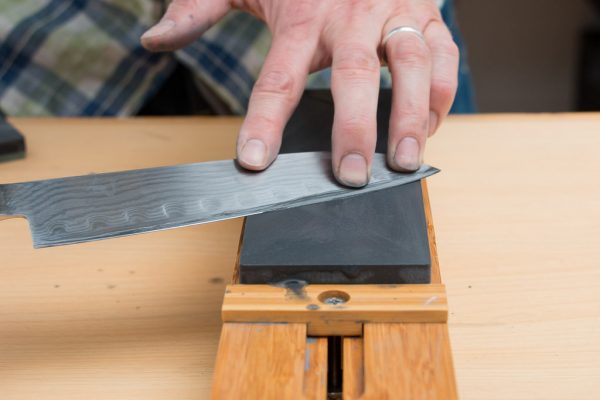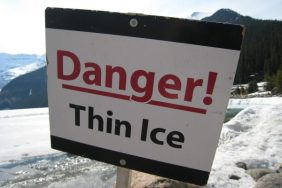There’s a lot of hoopla out there about proper knife sharpening techniques and some of it is a complete waste of time and effort. One thing we all agree on, however, is that a sharp knife is safer than a dull one.
Here are five tips to sharpen a knife and maybe save a finger or two.
Get a good sharpening stone
You can spend a lot of money on a super cool knife sharpening system or a fancy diamond sharpener but all you really need is a good 8 inch stone. My dad had his old stone for decades and always got a razor sharp edge (maybe it was because he used spit). A decent water or oil stone is all you need. Most have a fine side and a course side. Also, if you get an oil stone, you also have to get oil. Water stones work just as well and water is easy to find.
RELATED: Reviwing the Work Sharp Guided Knife Sharpening System
Look closely at the blade
There are many different grinds on knife blades. Look closely and see what angle the blade is so you get an idea of the angle you need when you put it on the stone. Also, examining the blade will tell you if there are nicks or rounded out spots and how much metal you will need to take off to get an edge. If your edge is really dull, you need to make a “rough cut” with the course side of your stone to bring it to a good “V”. If it just needs a touch-up, you can go right to the fine side of your stone.
Maintain the correct angle
Typically, the correct angle when sharpening a knife is between 13 and 16 degrees but who the heck knows what that looks like? Typically, when you lay the blade flat on the stone, angle it up in the back about a blade’s width and you will be in the ballpark. If you have a knife that just needs to be touched up you can usually sight the angle by turning it up to match the existing angle. Too steep of an angle will give you a rounded point. Think of a very sharp “V” for best results.
RELATED: One of the Best Bushcraft Knives Around
Cut into the stone
After determining the correct angle, start by making long, even strokes across the stone. Imagine that you are cutting a very thin slice out of it. You should feel it cut into the stone very slightly. If your angle is off, you will feel more of a glide. If your angle is too steep, you will hang up and eventually ruin your edge. You should feel some tension but it should be smooth. As you cut across the stone, slowly draw it from the hilt (nearest the handle) to the tip while you pull it down and towards you.
Don’t use too much pressure
You want to maintain a smooth, even pressure on your blade but not too much. Too much pressure will cause deeper serrations in the steel and you will end up with a rough edge. Make about 5 passes and then turn the blade over and do 5 on the other side making sure you have the correct angle. This maintains an even edge on each side. As you finish a few passes on either side of the blade, check the “V” to see if it is even. Also test the blade for sharpness.
As you practice, you will get the hang of it. With the right pressure, angle and smooth strokes (make sure you maintain the same angle and pressure along the whole blade), you will soon be able to make micro-adjustments and maintain a razor sharp edge on all your knives and lessen the opportunity for injury. You know you’ve done well when you can easily slice a piece of paper. Having a sharp knife can make all the difference when you need it.
Photo credit: Flickr








